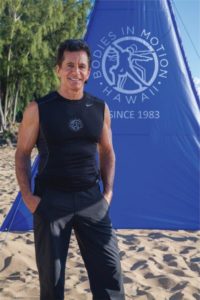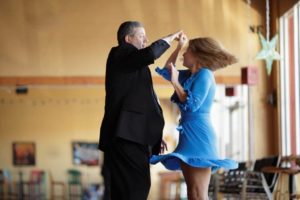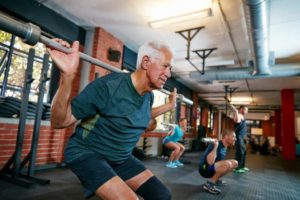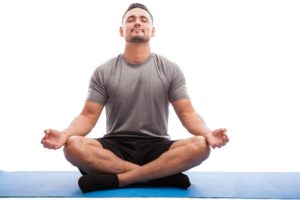Program Trends
On This Day in Fitness History
In March 2007, Gilad Janklowicz was inducted into the National Fitness Hall of Fame. Janklowicz is best known as the primary personality in Bodies in Motion, a popular and long-running fitness show.
A Scientific Approach to Core Training
Core training can improve functional capacity and reduce injury potential. But accurately programming a successful, tailored and progressive core- training protocol can be a complicated endeavor. Now, researchers from Heriot-Watt University in Edinburgh, Scotland, have developed a model they hope gives fitness pros a solid platform to work from.
Healthiest and Unhealthiest States
America’s Health Rankings® has released its annual report, which ranks each state’s health based on 35 factors, including behaviors, community and environment, policy, clinical care, and outcomes data. Now in its 28th year, the report has two primary goals: to provide a benchmark for states and to promote action to improve the health of citizens.
According to the data, these are the five healthiest states:
1. Massachusetts
2. Hawaii
3. Vermont
4. Utah
5. Connecticut
The Best Exercise to Prevent Mental Decline
Exercise can boost brain health and slow cognitive decline. One form of exercise in particular seems to produce the best benefits—dancing!
Exercise Responses Vary Among Women
A new study from Bangor University in Wales affirms that body type influences a woman’s response to exercise, potentially affecting weight management success.
Female participants were assigned to either a 4-week or 8-week circuit training intervention. The women met three times per week and exercised at 50%–90% VO2 peak for 45–90 minutes per session. They were instructed not to diverge from their usual diets.
How Older Adults Can Boost Psychological Well-Being
Researchers from Finland have determined that older adults who pump iron can build more than muscle: Resistance training can strengthen their outlook on life. The scientists say frequency is an important variable in maximizing benefits.
Sample Class: Functional-Impact Fun!
Get participants jumping with a combination of functional fitness movements and plyometric exercises that create an intense and enjoyable interval workout. The functional moves build strength and coordination, while the plyometric drills focus on muscle power and cardiovascular fitness. Together, they provide a total-body conditioning workout.
Functional-Impact Fun! Details:
Goal/emphasis: total-body fitness
Total time: 45–60 minutes
Community Cooldown
Life isn’t predictable, so why should our movements be? Add fun games to your cooldowns to help active agers learn to react to on-the-spot activities in a functional way. The following games include a social neuroscience component that builds camaraderie, upgrades reaction time and improves balance. Try them toward the end of class to get seniors on the same page.
Storks and Gazelles
Purpose: to train gait efficiency and reaction time.
Meditation: Part of a Heart-Healthy Lifestyle?
The American Heart Association has released a scientific statement noting that meditation has potential to reduce some heart disease risk factors and may be considered an adjunct to a heart-healthy lifestyle of good nutrition, physical activity and smoking cessation, combined with medical treatment for conditions like high cholesterol or high blood pressure.
Question of the Month
With the American Heart Association’s recent recognition of meditation and mindfulness practices and with meditation studios appearing in Los Angeles and New York City, it’s clear that these activities are going mainstream. Are you or is your facility integrating this trend into programs? For example, are you offering yoga and meditation classes or meditation-only sessions?
Share your responses with executive editor Joy Keller at jkeller@ideafit.com.
On This Day in Fitness History
In February 2009, the American College of Sports Medicine, responding to mounting research evidence, updated its 2001 position stand on how much physical activity is needed to lose weight and not regain it.
Strength Training and Type 2 Diabetes
A regular exercise program can help people with type 2 diabetes to manage blood sugar levels and maintain or improve fitness levels and overall health.
Fitness Facility Membership by the Numbers
In 2016 America, traditional commercial health clubs—multipurpose, fitness-only and corporate facilities—served 32.2 million members, a 3% decline from 2015, according to the International Health, Racquet & Sportsclub Association. Studios served another 18.2 million, a 15% improvement.
Nonprofit facility membership rose 6.9% from 2015 to more than 24 million. Collectively,
studio facilities claimed 40.7% of total membership.
Combined Training for Fitness and Weight Loss Clients
In today’s marketplace, knowing how to offer combined training is a must-have skill. People want it all—cardiovascular, strength and flexibility training—in just 50 minutes.
Taking the Right Step—Walking Research for the Ages
Have you ever heard clients say that “walking doesn’t count” as exercise? The truth is that walking can be a valuable part of your clients’ wellness routines—but how those steps fit into a whole program may depend on age. Two different studies offer valuable feedback on the benefits of walking through a workout.
STUDY #1: When Walking and Weight Loss Are in Step
Most Popular Club Activities
The three types of workout equipment used most often in health clubs in 2016 were treadmills, resistance machines and free weights, according to the IHRSA 2017 Health Club Consumer Report. Among group exercise and training programs, yoga topped the list, with 36% of members reporting participation. Stretching (24%) and calisthenics (23%) ranked second and third.
All Types of Exercise Prevent Depression
Regular exercise of any intensity for as little as 1 hour per week can prevent depression in people of all ages and genders, according to findings by an international research team led by the Black Dog Institute in Randwick, Australia. The study monitored exercise levels and symptoms of anxiety and depression in 33,908 Norwegian adults for more than 11 years.
Body Image and the Fitness Industry
A look at why the fitness industry does indeed have a body image problem—and what we can do about it, starting now.
Creative Ideas That Inspire
Camp 4 at Mountain Challenge in Maryville, Tennessee, is an outdoor fitness facility inspired by Yosemite and created to counteract the obesity and inactivity epidemic. Once a week, Mountain Challenge’s backyard is open for recreational exercise and includes access to climbing, bouldering, group fitness classes and a yoga deck, as well as resistance bands and kettlebells for customized workouts. Student interns from the local college’s exercise science and physical education departments oversee the activities and help design programs.
Cultivate Joy Through Mindfulness
It’s a busy, technology-dominated world—and most of us are continually spinning, twisting and turning in an effort to “get things done” and “produce.” We work, we raise families, we have countless responsibilities. The truth is, this is distracted living, and it raises stress levels, lowers productivity and interferes with our ability to focus. When we live this way, we fail to cultivate a sense of contentment and joy.



















